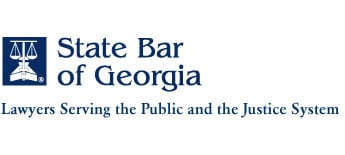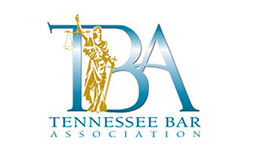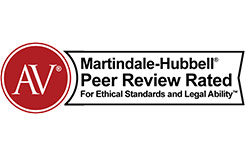The Insurance Hoax
Julie Tunnell remembers standing in her debris-strewn driveway when the tall man in blue jeans approached. Her northern San Diego tudor-style home had been incinerated a week earlier in the largest wildfire in California history. The blaze in October and November 2003 swept across an area 19 times the size of Manhattan, destroying 2,232 homes and killing 15 people. Now came another blow
A representative of State Farm Mutual Automobile Insurance Co., the largest home insurer in the U.S., came to the charred remnants of Tunnell’s home to tell her the company would pay just $220,000 of the estimated $306,000 cost of rebuilding the house.
“It was devastating; I stood there and cried,” says Tunnell, 42, who teaches accounting at San Diego City College. “I felt absolutely abandoned.”
Tunnell joined thousands of people in the U.S. who already knew a secret about the insurance industry: When there’s a disaster, the companies homeowners count on to protect them from financial ruin routinely pay less than what policies promise. Insurers often pay 30-60 percent of the cost of rebuilding a damaged home–even when carriers assure homeowners they’re fully covered, thousands of complaints with state insurance departments and civil court cases show.
Paying out less to victims of catastrophes has helped produce record profits. In the past 12 years, insurance company net income has soared–even in the wake of Hurricane Katrina, the worst natural disaster in U.S. history. Property- casualty insurers, which cover damage to homes and cars, reported their highest- ever profit of $73 billion last year, up 49 percent from $49 billion in 2005, according to Highline Data LLC, a Cambridge, Massachusetts-based firm that compiles insurance industry data.
The 60 million U.S. homeowners who pay more than $50 billion a year in insurance premiums are often disappointed when they discover insurers won’t pay the full cost of rebuilding their damaged or destroyed homes. Property insurers systematically deny and reduce their policyholders’ claims, according to court records in California, Florida, Illinois, Mississippi, New Hampshire and Tennessee. The insurance companies routinely refuse to pay market prices for homes and replacement contents, they use computer programs to cut payouts, they change policy coverage with no clear explanation, they ignore or alter engineering reports, and they sometimes ask their adjusters to lie to customers, court records and interviews with former employees and state regulators show. As Mississippi Republican U.S. Senator Trent Lott and thousands of other homeowners have found, insurers make low offers–or refuse to pay at all–and then dare people to fight back.
“It’s despicable not to make good-faith offers to everybody,” says Robert Hunter, who was Texas insurance commissioner from 1993 to ’95 and is now insurance director at the Washington-based Consumer Federation of America. “Money managers have taken over this whole industry. Their eyes are not on people who are hurt but on the bottom line for the next quarter.”
The industry’s drive for profit has overwhelmed its obligation to policyholders, says California Lieutenant Governor John Garamendi, a Democrat. As California’s insurance commissioner from 2002 to ’06, Garamendi imposed $18.4 million in fines against carriers for mistreating customers. “There’s a fundamental economic conflict between the customer and the company,” he says. “That is, the company doesn’t want to pay. The first commandment of insurance is, ‘Thou shalt pay as little and as late as possible.’”
Although the tension between insurers and their customers has long existed, it was in the 1990s that the industry began systematically looking for ways to increase profits by streamlining claims handling. Hurricane Hugo was a major catalyst. The 1989 storm, which battered North and South Carolina, left the industry reeling from $4.2 billion in claims. In September 1992, Allstate Corp., the second-largest U.S. home insurer, sought advice on improved efficiency from McKinsey & Co., a New York-based consulting firm that has advised many of the world’s biggest corporations, according to records in at least six civil court cases.
State Farm, based in Bloomington, Illinois, and Los Angeles-based Farmers Group Inc., the third-largest home insurer in the U.S., also hired McKinsey as a consultant, court records show.
McKinsey produced about 13,000 pages of documents, including PowerPoint slides, in the 1990s, for Northbrook, Illinois-based Allstate. The consulting firm developed methods for the company to become more profitable by paying out less in claims, according to videotaped evidence presented in Fayette Circuit Court in Lexington, Kentucky, in a civil case involving a 1997 car accident.
One slide McKinsey prepared for Allstate was entitled “Good Hands or Boxing Gloves,” the tape of the Kentucky court hearing shows. For 57 years, Allstate has advertised its employees as the “Good Hands People,” telling customers they will be well cared for in times of need. The McKinsey slides had a new twist on that slogan. When a policyholder files a claim, first make a low offer, McKinsey advised Allstate. If a client accepts the low amount, Allstate should treat the person with good hands, McKinsey said. If the customer protests or hires a lawyer, Allstate should fight back.
“If you don’t take the pittance they offer, they’re going to put on the boxing gloves and they’re going to batter injured victims,” plaintiffs attorney J. Dale Golden told Judge Thomas Clark at the May 12, 2005, hearing in which the lawyer introduced the McKinsey slides.
One McKinsey slide displayed at the Kentucky hearing featured an alligator with the caption “Sit and Wait.” The slide says Allstate can discourage claimants by delaying settlements and stalling court proceedings. By postponing payments, insurance companies can hold money longer and make more on their investments– and often wear down clients to the point of dropping a challenge. “An alligator sits and waits,” Golden told the judge, as they looked at the slide describing a reptile.
McKinsey’s advice helped spark a turnaround in Allstate’s finances. The company’s profit rose 140 percent to $4.99 billion in 2006, up from $2.08 billion in 1996. Allstate lifted its income partly by paying less to its policyholders. Allstate spent 58 percent of its premium income in 2006 for claim payouts and the costs of the process compared with 79 percent in 1996, according to filings with the U.S. Securities and Exchange Commission. The payout expense, called a loss ratio, changes each year based on events such as natural disasters; overall, it’s been decreasing since Allstate hired McKinsey.
Investors have noticed. Allstate’s stock price jumped fourfold to $60.95 on July 11 from its closing price on June 3, 1993, the day of its initial public offering. During the same period, the Standard & Poor’s 500 Index rose threefold. State Farm’s profits have doubled since 1996 to $4.8 billion in 2006. Because State Farm is a mutual company, meaning it’s owned by its policyholders, it doesn’t have shares that trade publicly.
“This is about as good a stretch as I’ve seen,” says Michael Chren, who manages $1.5 billion at Allegiant Asset Management Co. in Palm Beach Gardens, Florida, and has followed the property-casualty industry for 20 years. The industry’s performance during the past five years has been superb, even with payouts for Katrina, he says. “All the stars have been in alignment. There has been decent pricing of products and an extremely attractive and very low loss ratio.”
Reducing payouts is just one way the industry has improved profits. Carriers have also raised premiums and withdrawn from storm-plagued areas such as the Gulf Coast of the U.S. and parts of Long Island, New York–to lower costs and increase income, says Amy Bach, executive director of United Policyholders, a San Francisco-based group that advises consumers on insurance claims. “What this says is that the industry has been raking in spectacular profits while they’re getting more and more audacious in their tactics,” she says.
Allstate spokesman Michael Siemienas says the company won’t comment on what role McKinsey played in lowering the insurer’s loss ratio and boosting its profits. Allstate did change the way it handles homeowners’ insurance claims, he says. “In the early 1990s, Allstate redesigned its claims practices to more efficiently and effectively handle claims and better serve our customers,” he says.
“Allstate’s goal remains the same: to investigate, evaluate and promptly resolve each claim based on its merits,” Siemienas says. “Allstate believes its claim processes support this goal and are absolutely sound.”
McKinsey doesn’t discuss any of its work for clients, spokesman Mark Garrett says.
Jerry Choate, Allstate’s chief executive officer from 1995 to ’98, said at a news conference in New York in 1997 that the company’s new claims-handling process had reduced payments and increased profit, according to a report in a March 1997 edition of National Underwriter magazine. Insurers can’t make significantly more money just from cutting sales costs, he told reporters. “The leverage is really on the claims side,” Choate said. “If you don’t win there, I don’t care what you do on the front end. You’re not going to win.”

The more cash insurers can keep from premiums, the more they can invest. This pool of assets–most of which the companies invest in government and corporate bonds–is known as float.
“Simply put, float is money we hold that is not ours but which we get to invest,” billionaire Warren Buffett, CEO of Berkshire Hathaway Inc., wrote in his annual letter to shareholders this year. “When an insurer earns an underwriting profit, float is better than free,” he wrote in 2006. Omaha, Nebraska-based Berkshire Hathaway generated 51 percent of its $11 billion profit in 2006 from insurance.
Claims payouts for the entire property-casualty industry have decreased in the past decade. In 2006, carriers paid out 55 percent of the $435.8 billion in premiums collected, according to the Insurance Information Institute, a trade group in New York. That compares with a 64 percent payout ratio on $267.6 billion in premium revenue in 1996. As companies pay less to policyholders, their investment gains are growing, according to the trade group and research firm A.M. Best Co. in Oldwick, New Jersey. The industry has increased profits by an annual average of 46 percent since 1994, Institute data show. In 2006, carriers invested $1.2 trillion and recorded a net gain of $52.3 billion, up from $713.5 billion invested for a gain of $39.1 billion in 1994.
Insurance companies are no longer following their mandate to take care of policyholders’ money and then pay it out when needed, says Douglas Heller, executive director of the nonprofit Foundation for Taxpayer and Consumer Rights in Santa Monica, California. “The whole purpose of insurance is evaporating before our eyes as we continue to send checks to the companies,” Heller says. “Insurers are looking to shed their purpose as a risk bearer and become financial institutions.”
That kind of criticism is unwarranted, says Robert Hartwig, chief economist at the Insurance Information Institute. He says about 1 percent of policyholders contest what they’re offered. “The insurance industry can be justifiably proud of its performance,” Hartwig says. “It’s in the insurance industry’s best interests to settle claims as fairly and as rapidly as possible.”
Companies have sharpened the use of technology in the past 20 years to help tighten claims payouts. Insurers following McKinsey’s advice on claims processing have adopted computer programs with names such as Colossus and Xactimate. Colossus, made by El Segundo, California-based Computer Sciences Corp., calculates the cost of treating people injured in auto accidents, including the degree of pain and suffering they’ll endure and any permanent impairment they may have, according to Computer Sciences’ Web site. Xactimate, made by Xactware Solutions Inc. of Orem, Utah, is a program that estimates the cost of rebuilding a home.
Insurers sometimes manipulate these programs to pay out as little as possible, lawsuits have asserted. “Programs like Colossus are designed to systematically underpay policyholders without adequately examining the validity of each individual claim,” former Texas insurance commissioner Hunter told the U.S. Senate Committee on Commerce, Science and Transportation on April 11. He also criticized Xactimate. “If you don’t accept their offer, which is a low ball, you end up in court,” Hunter said. “And that was the recommendation of McKinsey.” Computer Sciences and Xactware declined to comment.
Farmers Group, a subsidiary of Zurich Financial Services AG, agreed in 2005 to stop using Colossus to evaluate claims filed by policyholders who have accidents with uninsured or underinsured drivers. The move was part of a $40 million settlement in a class-action lawsuit in Pottawatomie County District Court in Oklahoma in which the plaintiffs claimed the company had repeatedly and wrongly failed to pay enough for crash injuries.
An internal e-mail introduced in the Farmers lawsuit shows the company had pressured its adjusters, whom it calls claims representatives, or CRs, to pay out smaller amounts–and rewarded them when they did.
“As you know, we have been creeping up in settlements,” David Harding, a Farmers claims manager, wrote in an e-mail to employees on Nov. 20, 2001. “Our CRs must resist the temptation of paying more just to move this type file. Teach them to say, ‘Sorry, no more,’ with a toothy grin and mean it.” Harding praised a worker for making low settlements. “It can be done as Darren consistently does,” he wrote. “If he keeps this up during 2002, we will pay him accordingly.”
Farmers said in court papers that it didn’t seek to pay less than customers were due. “The e-mail speaks for itself,” Farmers wrote. “Plaintiff’s characterization of it is denied.”
Edward Rust Jr., CEO of State Farm, testified in a 2006 civil case that his company revamped its claims handling through a project called ACE, or Advanced Claims Excellence. McKinsey suggested the use of ACE, according to evidence presented in the district court of Grady County, Oklahoma.
“Technology has allowed us to really streamline our claim organization to be more efficient and responsive,” Rust testified. He said the company wanted to cut expenses for claims. In the Oklahoma case, Bridget and Donald Watkins, whose Grady County house was destroyed during a tornado in 1999, accused State Farm of misrepresenting the damage from the storm and won a $12.9 million judgment in May 2006. Watkins and State Farm agreed to an undisclosed settlement after the judgment.
Hunter, who also headed the federal flood insurance program under Presidents Gerald Ford and Jimmy Carter, told Congress that Allstate, with McKinsey’s guidance, gave the name Claim Core Process Redesign to its strategy to change payout practices.
As pervasive as computers have become in insurance, the key actor in settling claims is still the adjuster, the person who talks to policyholders and decides how much they should be paid. Allstate has asked adjusters to deceive customers, says Jo Ann Katzman, who worked as a claims adjuster for Allstate in 2002 and ’03. She says managers regularly came to her office in Farmington Hills, Michigan, to give pep talks on keeping claim payments down. They awarded prizes such as portable refrigerators to adjusters who tried to deny claims by blaming fires on arson without justification, she says. “We were told to lie by our supervisors,” says Katzman, 49, who quit by taking a company buyout in 2003. “It’s tough to look at people and know you’re lying.”

Katzman says an adjuster at Allstate, on orders from a supervisor, told an 89- year-old Detroit fire victim that Allstate wouldn’t replace cabinets in her home even though the insurance policy said they were covered. In another case, Katzman says Allstate wouldn’t replace a fire-damaged refrigerator–an appliance she says was covered. Katzman now runs Accurate Estimating Services, an independent adjusting company in Bloomfield Hills, Michigan. Allstate’s Siemienas declined to comment on Katzman’s statements.

Insurers sometimes order employees to offer replacement cost settlements that have no connection to actual prices of home contents, according to testimony in a civil trial. A jury in November 2005 awarded Larry Stone and Linda Della Pelle $5.2 million in punitive damages and $616,000 to construct a new house after finding that Fidelity National Insurance Co. of Jacksonville, Florida, had underpaid the couple by $183,000 when it offered them $433,000 to rebuild their two-story Claremont, California, residence.
During the trial in Los Angeles Superior Court, Ricardo Echeverria, the couple’s attorney, questioned Kenneth Drake, president of Canyon Country, California- based RJG Construction Inc., who had been hired by Fidelity’s lawyers to evaluate damage estimates.
“Are you telling us that sometimes, because the insurance carriers dictate what amounts they are willing to allow for unit costs, estimators then have to comply with that?” asked Echeverria, according to the court transcript.
“That’s absolutely true,” Drake said.
“Do you think that’s fair?” Echeverria asked.
“Fair or not, it’s the name of our business,” Drake said.
Drake declined to comment on his testimony. Fidelity is appealing the award.
A New Hampshire case involving a home destroyed in a fire exposed another insurance company tactic: changing a policy retroactively. In April 2003, the Rockingham county attorney in Kingston, New Hampshire, found that a unit of Hartford Financial Services Group Inc. had deleted the replacement cost portion of the homeowner’s policy of Terry Bennett after his five-bedroom house burned to the ground in 1993. Bennett, a physician, sued Twin City Fire Insurance Co., claiming his home and its contents–including antiques and fine art–were worth $20 million, not the $1.7 million the insurer paid him. After an 11-year battle, he settled with Hartford in 2004 for an undisclosed amount. “Fighting an insurance company is like staring down the wrong end of a cannon,” Bennett says.
An unprecedented number of people stared down that cannon after Hurricane Katrina. The August 2005 storm killed more than 16,000 people in Louisiana and Mississippi, left 500,000 people homeless and cost insurers $41.1 billion. More than 1,000 homeowners sued their insurers in the wake of the storm–the largest- ever number of insurance lawsuits stemming from a U.S. natural disaster.
For insurers, the multibillion-dollar question regarding Katrina was how much of the destruction was caused by wind and how much by water. Property insurance policies don’t cover damage caused by flooding; homeowners have to purchase separate insurance administered by the U.S. government. The wind/water issue has spurred allegations that insurers manipulated the findings of adjusters and engineers.
Ken Overstreet, an engineer based in Diamondhead, Mississippi, who examined destroyed Gulf Coast residences, says someone altered his findings on the cause of the damage to at least four homes. “We were working for insurance companies, and they wanted certain results,” says Overstreet, who has been a licensed civil engineer since 1981. “They wanted to get a desired outcome, and that’s what they did.”
Overstreet, who was working for Houston-based Rimkus Consulting Group Inc., prepared a report on the Gulfport, Mississippi, home of Hubert and Joyce Smith for Meritplan Insurance Co. The engineer found that both wind and water had damaged the house. “The winds out of the east would have racked the entire structure to the west and simply lifted the footings up,” he wrote.
Meritplan declined to pay anything to the Smiths, telling them that all of the damage was caused by water. The company sent the Smiths what it said was Overstreet’s engineering report. “Due to the extent of the structural damage to the residence, the storm surge accounted for the damage,” the report they got said. The Smiths called Overstreet and asked him to look at what Meritplan had sent them. Overstreet says he looked at both reports side by side and then told the couple that someone had changed his conclusion after his inspection.
“If they defrauded me, how many more did they defraud?” asks Hubert Smith, 88, a retired chiropractor. “There’s a lot of crap going on.”
Six lawsuits against Rimkus allege the company altered engineering reports. “Those allegations are absolutely false,” says Arch Currid, a Rimkus spokesman. “There’s no fact to those claims. We’re going to vigorously defend ourselves in court, and we’re confident we will prevail.”

Ed Essa, a spokesman for Calabasas, California-based Countrywide Financial Corp., the parent of Meritplan, says the company confidentially settled a lawsuit with the Smiths in March.
Another engineer involved in Katrina, Bob Kochan, CEO of Forensic Analysis & Engineering Corp., says State Farm asked him to redo his reports because the insurer disagreed with the engineers’ conclusions. Kochan sent an Oct. 17, 2005, e-mail to his staff saying State Farm executive Alexis “Lecky” King asked for the changes. “Lecky told me that she is experiencing this same concern with other engineering companies,” Kochan wrote. “In her words, ‘They are all too emotionally involved and working too hard to find justifications to call it wind damage.’”
Kochan says he complied so State Farm didn’t cut its contract with his company. “They didn’t like our conclusions,” he says. “We agreed to re-evaluate each of our assignments.”
Randy Down, an engineer at Raleigh, North Carolina-based Forensic, wrote this Oct. 18, 2005, e-mail response to Kochan: “I have a serious concern about the ethics of this whole matter. I really question the ethics of someone who wants to fire us simply because our conclusions don’t match theirs.” The e-mails were made public in a civil case against State Farm in Jackson, Mississippi.
State Farm spokesman Phil Supple says Kochan’s e-mail comments are out of context. He says sometimes information in engineering reports doesn’t support the conclusions.
One State Farm policyholder in Mississippi was Senator Lott, who lost his home in Katrina. He sued State Farm for fraud in U.S. District Court in Jackson, after the insurer ruled that his home had been damaged by water and refused to pay him anything. “It’s long overdue for this industry to be held accountable,” Lott, 65, says. Lott and State Farm agreed to a confidential settlement in April.
Lott has introduced legislation to have insurers regulated by the federal government. That would supplant a patchwork system of regulation by states. Insurance has no body analogous to the SEC, which can refer cases to the Justice Department for criminal prosecution. That doesn’t happen with insurers. The most that state insurance departments typically do is impose civil fines when companies mistreat customers. Such sanctions are weak and infrequent, says Hunter, the former Texas insurance commissioner. Before Katrina, no state or federal prosecutor had ever investigated a nationally known property-casualty company for criminal mistreatment of policyholders. Mississippi Attorney General Jim Hood says a federal grand jury is probing insurance company claims handling after the hurricane.
There was no criminal investigation after State Farm offered just 15 percent of replacement costs to Michele and Tim Ray, whose house was wrecked by a tornado in April 2006. A contractor estimated the cost to rebuild the Hendersonville, Tennessee, home at $254,000. State Farm made three inspections of the property, Ray says, and sent the Rays a check for $36,000, which the couple returned. A year after the twister, the couple remained in the damaged home, with their tattered roof covered by tarpaulins. In April, after Bloomberg News submitted questions to State Farm about the Ray case, the company inspected the house again. This time, it gave the Rays $302,000. “We decided to call it a total loss and agreed to pay the policy limits after deciding the damage was caused by the storm,” State Farm spokesman Shawn Johnson says.
State Farm won’t discuss what role McKinsey played in helping the insurer shape its approach toward customers. Similarly, no official at any insurer that hired McKinsey is willing to talk about the consulting firm.
Privately held McKinsey, which has 14,000 employees in 40 countries, has worked for many of the largest companies in the world, according to its Web site. “We take pride in doing what is right rather than what is right for the profitability of our firm,” Managing Director Ian Davis says in a quote posted on the site.
McKinsey pioneered the overhaul of the property casualty industry at Allstate. The company hired McKinsey in 1992 after the insurer was spun off from what’s now Sears Holdings Corp. of Hoffman Estates, Illinois, says David Berardinelli, a Santa Fe, New Mexico, lawyer who won access to view the McKinsey documents for a limited time during a lawsuit involving an auto accident. McKinsey advised the insurer to pay claims quickly at low amounts while delaying payments for as long as possible for those who wanted large settlements, Berardinelli says. “They’re capitalizing on the vulnerability of people,” he says.
Berardinelli says McKinsey suggested that Allstate hold so-called town hall meetings with claims adjusters to urge them to pay less to customers.
Shannon Kmatz, a former Allstate claims adjuster, says she attended some of those sessions. She says managers told employees to keep claim payouts as low as possible. “The leaders of those town hall meetings were always concerned that we were doing our part to help the stock price by keeping claims down,” says Kmatz, 34, who worked for Allstate for three years in New Mexico in the late 1990s and is now a police officer. “It was obvious from the get-go that all they were concerned about was the bottom line.”
Just once, at the May 2005 hearing in Lexington, Kentucky, the PowerPoint slides McKinsey prepared for Allstate were made public. William Hager and his wife, Geneva, who suffered neck and back injuries after the family’s car was rear- ended in a 1997 accident in Lexington, sued the insurer, claiming the company failed to cover her medical expenses. The case is scheduled to go to trial in October.
One McKinsey slide prepared for Allstate was called “Zero-Sum Economic Game,” a videotape of the court hearing shows. The slide explains that there are winners and losers, and the insurance company can win by paying out small amounts. “There is a finite pool of money,” Golden, the plaintiffs attorney, told the judge at the hearing. “Either it goes to the injured victim or it goes to Allstate’s pocket as surplus.”
Allstate’s attorney at the hearing, Mindy Barfield of Lexington, didn’t say anything about the McKinsey slides. She didn’t return phone calls seeking her comments.
Former federal flood insurance commissioner Hunter says the McKinsey approach exploits policyholders. “McKinsey presented it as a zero-sum game in which the winners would be Allstate and the losers would be the claimants,” Hunter says. “I don’t think a claims system should be viewed in that light. It’s against any principles on how you should settle insurance claims. They should be settled on their merits.”
Allstate convinced the judge to seal the McKinsey slides before and after the Lexington hearing. The insurer has resisted attempts to make the consulting firm’s work public in courts across the U.S., arguing it contains trade secrets. In 2004, the company was sanctioned by the Bartholomew Circuit Court in Indiana and fined $10,000 for refusing to turn over the records to attorney Richard Enyon, representing an auto accident victim. Allstate held on to the documents and appealed the punishment. The 7th Circuit Court of Appeals upheld the sanction. Allstate then appealed to the Indiana Supreme Court, which hasn’t yet made a decision.
Lawsuits in California, Florida and Texas have asserted that McKinsey’s work for Allstate helped the insurer cheat claimants. Records show that through the company’s Claim Core Process Redesign project, Allstate encouraged policyholders to accept small settlements on the spot.
The redesign also became a blueprint for fighting more claims in court as Allstate increased its legal staff, according to a 1997 company newsletter obtained by David Poore, a Petaluma, California, attorney who has represented homeowners in lawsuits against carriers. “The bottom line is that Allstate is trying more cases than ever before,” the newsletter said. “If the offer is not accepted, Allstate will go to court, if necessary, to prove the evaluation process is sound.”
McKinsey-style tactics have spread to insurers large and small–as homeowners discovered after three wildfires ravaged Southern California in 2003, including the one that hit northern San Diego. While Katrina struck thousands of low- income families in New Orleans, the San Diego fire affected mostly affluent homeowners, who fared no better with their insurance companies.
The fire obliterated large sections of Scripps Ranch, a community of 30,000 that sits atop a sagebrush and eucalyptus mesa, where homes can cost more than $1 million. After flames swept through the area on winds of up to 50 miles per hour, residents say they expected their insurance companies to live up to coverage promises and pay the full cost to rebuild. The Southern California fires led to 676 formal complaints to the state saying insurers offered payouts that fell far short of actual costs and delayed on paying claims.
One of the Scripps Ranch houses that went up in flames, a four-bedroom, gray- stucco home on a sloping cul-de-sac, belonged to J.P. Lapeyre, a division director at JDS Uniphase Corp., a Milpitas, California, maker of telecommunications equipment.

Lapeyre, 41, who is married and has two children, says he had no inkling as he viewed the remains of his house that his insurance would leave him $280,000 short of what he would need to rebuild. Representatives of Pacific Specialty Insurance Co. of Menlo Park, California, told him the most the firm would pay out was $168,075, not even half of the estimated reconstruction cost of $448,000.
The Pacific Specialty representative told Lapeyre in November 2003 that the insurer would pay $75 a square foot (0.09 square meter) to rebuild his 2,241- square-foot house. “What frustration,” Lapeyre says. “I had to try to prove to them that it would cost $200 a square foot.” That figure came separately from two builders, Norton Construction and TLC Contractors, both of San Diego. In February 2005, Lapeyre filed suit in San Diego County Superior Court against his insurer and the independent broker who sold him the policy, alleging negligence, breach of contract and fraud for leading him to believe that he was properly covered. After a fight of 19 months, Lapeyre dropped the suit when Pacific Specialty told a mediator assigned to the case it wouldn’t raise its offer, he says. “We decided it was time to get on with our lives and move forward,” says Lapeyre, who borrowed money to build a new house.
Karen and Bill Reimus, both lawyers, fought their carrier, Liberty Mutual Insurance Co., when it told them it wouldn’t pay the couple enough to rebuild their burned Scripps Ranch house. Karen, 40, says an agent for Boston-based Liberty Mutual assured her and her husband when they bought their house four months before the 2003 fire that their insurance would replace the home if it were destroyed.
In a December 2003 letter, two months after the fire, Liberty Mutual offered to pay $40,000 less than the limit of the couple’s policy, Karen says. In early 2004, San Diego-based Gafcon Construction Consultants determined the cost to rebuild was well above the limits of the couple’s policy.
The Reimuses began a phone and letter campaign to convince the company its offer was too low, Karen says. “It has now been almost seven months since the loss and we are still not agreed as to the numbers,” Karen wrote in a May 13, 2004, letter to Liberty Mutual.
Two weeks later, Liberty Mutual agreed to raise the couple’s limits by $100,000, Karen says. “This is clear evidence that the original estimate was a low ball,” she says. Liberty Mutual spokesman Glenn Greenberg says the company won’t discuss the case because its dealings with policyholders are private.
“The system is set up to take advantage of people when they’re at their weakest,” Karen says. “We went to one of the most-expensive companies in the country because we wanted to be ready for a rainy day. We asked for coverage that would replace the house. We thought replacement meant replacement.” Scripps Ranch couple Leslie Mukau and Robin Seaberg sued Allstate for alleged fraud and negligence for failing to pay the $900,000 that contractors estimate it would cost to replace their two-story home. Allstate offered the Seabergs $311,000, according to the 2004 San Diego County Superior Court suit. Allstate says in court papers the couple hasn’t shown the company was negligent and asked for dismissal of the suit, which is pending.
The California Department of Insurance examined the practices of Allied Property & Casualty Insurance Co., AMCO Insurance Co. and Allstate in connection with the California fires. It fined Allied and AMCO, both based in Des Moines, Iowa, a total of $20,000 for misleading nine policyholders into believing they were insured for full value. The regulators cited Allstate for six rule violations, including that it ignored complaints that it underinsured homeowners. The state didn’t fine Allstate, which told the department it had done nothing wrong.
“Fines by state regulatory agencies have been far too small and infrequent to deter unfair business practices,” United Policyholders’ Bach says. “It’s clear that cheating by insurers is a big, profitable business and regulators can’t muster the will or political strength to stop them.”
Most homeowners take what insurers offer because they don’t realize they’re being deceived or conclude that fighting is too costly and difficult, Bach says. “Virtually everyone who settles for what the insurer offers is taking less than they’re owed,” she says.
Homeowners across the U.S. have found themselves in the same situation. Kevin Hazlett, a lawyer, sued Farmers Group after an April 2006 tornado struck his home in O’Fallon, Illinois. Farmers had offered to pay him $470,000 to rebuild the house. Royal Construction Inc., based in Collinsville, Illinois, estimated the cost at $1.1 million. Hazlett, 52, accepted a settlement for an undisclosed amount.
Hazlett says Illinois Farmers, a subsidiary of Farmers, used the Xactimate software program to first determine what it would pay out. “They’re just pulling numbers out of thin air,” he says. “There’s no rhyme or reason.” Farmers spokesman Jerry Davies didn’t respond to requests for an interview.
Bo Chessor, owner of Royal Construction, says he sees insurers refusing to pay coverage limits all the time. “Most people just roll over and take it because they don’t have the money to fight it,” Chessor says. “What the insurance companies are doing is purely robbery.”
It may be robbery, but it’s rarely a crime. State insurance departments don’t prosecute insurance companies, and the federal government has no oversight. The insurance industry wants to keep it that way. To make their voice heard on federal regulation and other government decisions, insurers spent $98 million on lobbying in Washington in 2006, according to PoliticalMoneyLine, a unit of Congressional Quarterly. That’s the second-largest amount spent on lobbying by any group, behind $114.4 million by pharmaceutical companies.
Property-casualty companies do want something from the government: bailouts. Insurers beseech states and the federal government to foot more of the bill for rebuilding private homes after natural disasters. Florida has a catastrophe fund that insures some homes to reduce payouts by carriers. The fund paid out about $8.45 billion for storm damage in 2004 and ’05, according to its annual report. The federal flood insurance program covers $800 billion of property nationally, which helped the industry increase profits by 25 percent in 2005, the year of Katrina.
Homeowners whose properties have been destroyed by catastrophes contend with low payouts, higher premiums, software programs that underestimate rebuilding costs and sudden changes in policy values–all of which have been calculated methods for insurers to increase profits.
Tunnell, the San Diego accounting teacher whose home burned to the ground, says she thought State Farm had adequately insured her family when they bought their three-bedroom house in 1992. She says the policy, destroyed in the fire, provided for “full replacement coverage.” It guaranteed to rebuild the house, no matter the cost, she says. The company offered to pay $220,000–which was $121,600 less than a $306,000 figure her family got from State Farm’s own estimator, Hersum Construction Inc. of San Diego, for rebuilding the 1,700- square-foot house.
State Farm spokesman Supple says the company sent letters in 1997 to the Tunnels and other policyholders saying that it would no longer offer full replacement coverage. “Policyholders, by regulatory order, were sent prominent notices of the coverage change at that time,” he says. Tunnell says she doesn’t recall being notified. She says her family debated hiring a lawyer and suing, and eventually decided the battle would be too stressful. The Tunnels took the $220,000 and borrowed money to build a new house.
“Why is this happening to people over and over again?” Tunnell asks. “State Farm keeps underinsuring people, and they get away with it. This is unthinkable.” As long as insurers make the rules and control the game, Tunnell and homeowners across the U.S. won’t know whether their homes are fully insured, no matter what their policies say.
David Dietz is a senior writer at Bloomberg News in San Francisco.
By David Dietz and Darrell Preston
Bloomberg Markets September 2007
Read our Blog Entry About this Topic
Find out how you can help the National MS Society’s November 19, 2005 MS Walk for a Cure.

 (407) 712-7300
(407) 712-7300



























